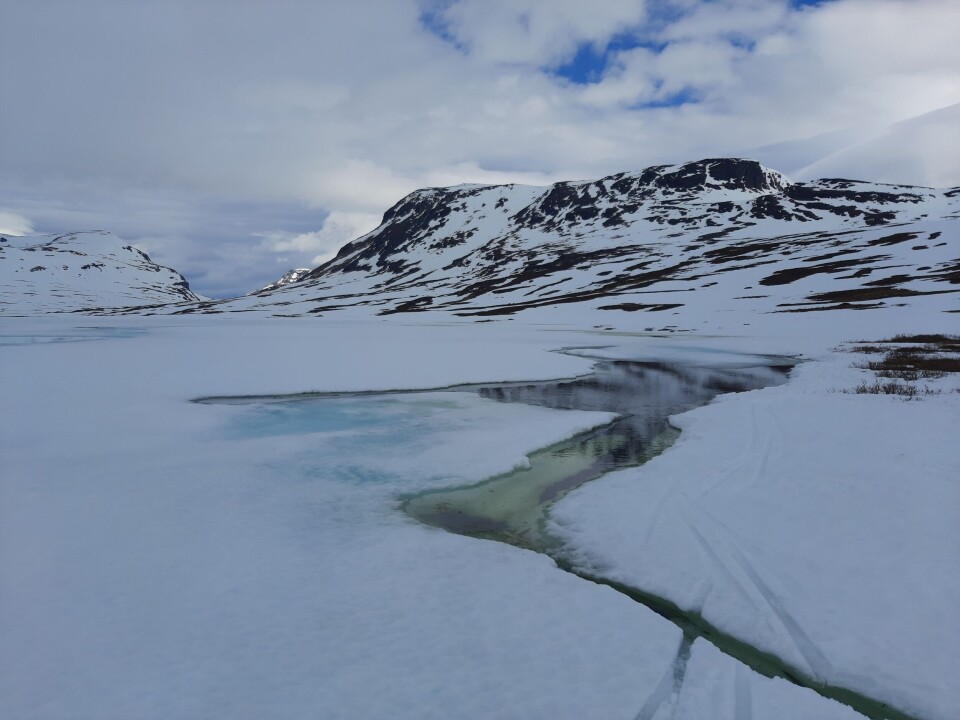THIS CONTENT IS BROUGHT TO YOU BY NINA - Norwegian Institute for Nature Research - read more
How will climate change affect lakes worldwide?
New research shows that Arctic lakes will be hit the hardest.

For years, lake research has mostly overlooked the ice-covered season, leaving big gaps in our understanding of how winter conditions shape lake ecosystems and how change might affect them.
“The ecology of ice-covered lakes is a bit of a black box for lake scientists. For a long time, we assumed that nothing interesting happened under the ice,” says Ted Ozersky from University of Minnesota Duluth, lead author of the new study.
But as climate change shortens winters, knowing how lakes function under the ice has become urgent. The thickness of the ice, the depth of snow, and when the lake freezes or thaws determine how much light enters the water, which affects photosynthesis and food webs.
Researchers from the USA, Canada, and Norway used models of sunlight, ice, and snow to show how warming winters are disrupting lake productivity.
Shifts in productivity and food webs
The study shows that high-latitude lakes, from northern Norway to the Canadian Arctic, are far more sensitive to winter changes than lakes farther south.
At 75°N, for example, more than half of the year’s solar radiation arrives while lakes are still ice-covered. Even small shifts in ice duration or transparency can trigger major ecological effects.
“In northern Norway and in other Arctic regions, many lakes are still frozen well into the midnight sun period. In these Arctic lakes, under-ice primary production can contribute substantially to food webs and could be threatened by predicted increases in snow cover. On the other hand, less ice during continuous daylight could create favourable conditions for more open-water productivity,” says co-author Amanda Poste from the Norwegian Institute for Nature Research (NINA).
As warming continues, this imbalance could shrink. More overlap between light and warmth may boost productivity, but also change predator–prey dynamics and the timing of food web events.
A global effort to understand frozen lakes
“Many researchers who're starting to study frozen lakes focus on just one region. By collaborating with scientists across the northern hemisphere, from Minnesota to Québec to the high Arctic, we were able to identify this large-scale pattern,” says Ozersky.
The findings offer a new framework for predicting how climate change will affect lakes worldwide.
The researchers are now working with dozens of international partners to expand winter lake monitoring in order to understand and address future trends.
Amanda Poste and Eva Leu will follow up these questions as Norwegian partners in a newly funded Nordforsk project.
Reference:
Ozersky et al. Impacts of Changing Winters on Lake Ecosystems Will Increase With Latitude, Ecology Letters, vol. 28, 2025. DOI: 10.1111/ele.70200

This content is paid for and presented by NINA - Norwegian Institute for Nature Research
This content is created by NINA's communication staff, who use this platform to communicate science and share results from research with the public. NINA is one of more than 80 owners of ScienceNorway.no. Read more here.
More content from NINA:
-
White-tailed sea eagles are breeding in Ireland again after more than a century
-
Could a tunnel help wild reindeer in Norway?
-
Norwegian white-tailed sea eagles are helping to rebuild a lost population in Ireland
-
1 in 4 freshwater species are at risk of extinction: "It's not too late to take action"
-
Insects prefer cold winters with lots of snow
-
Weather radars reveal where birds migrate




































